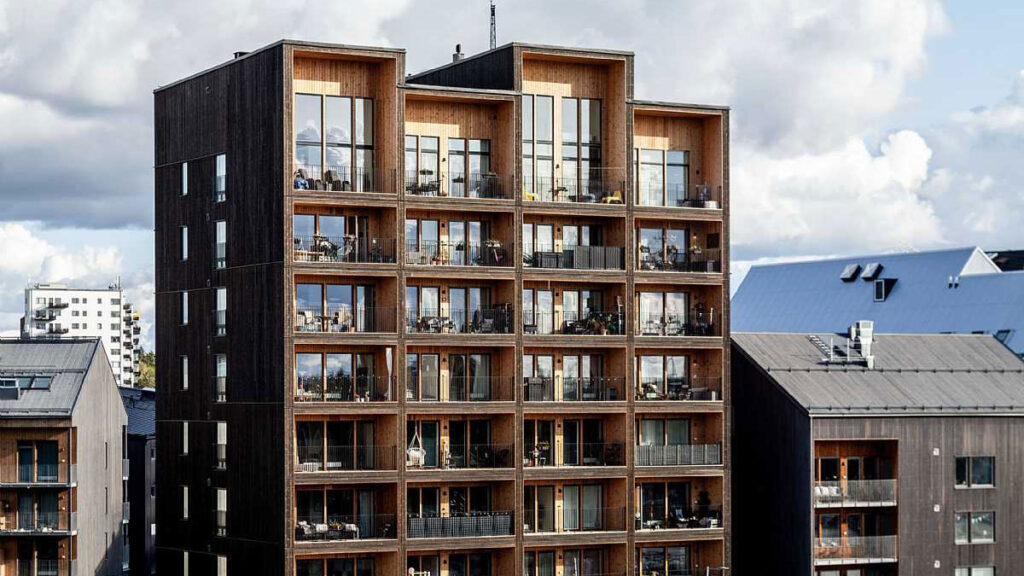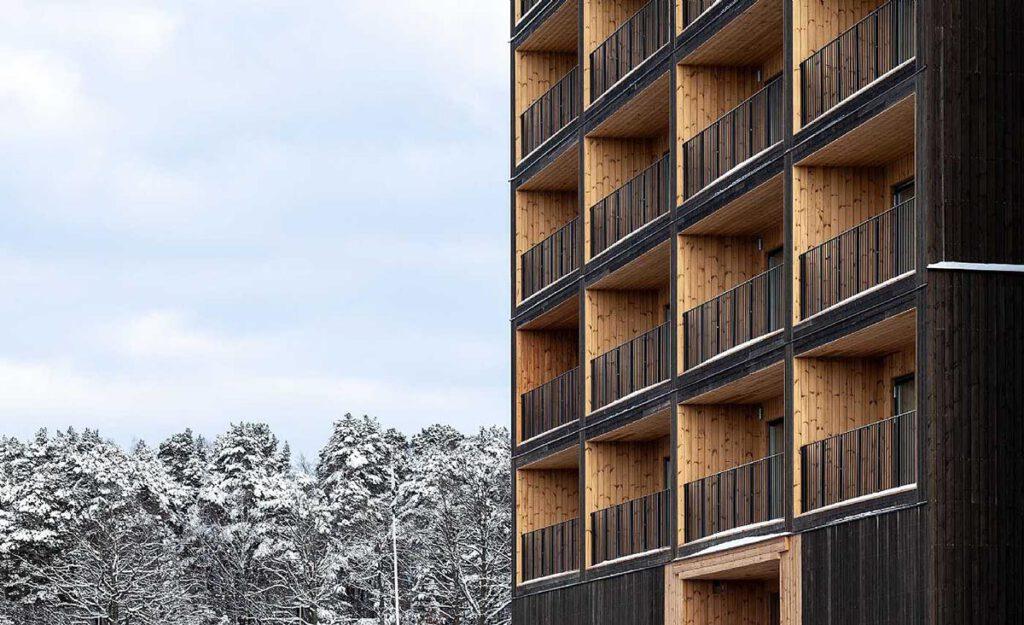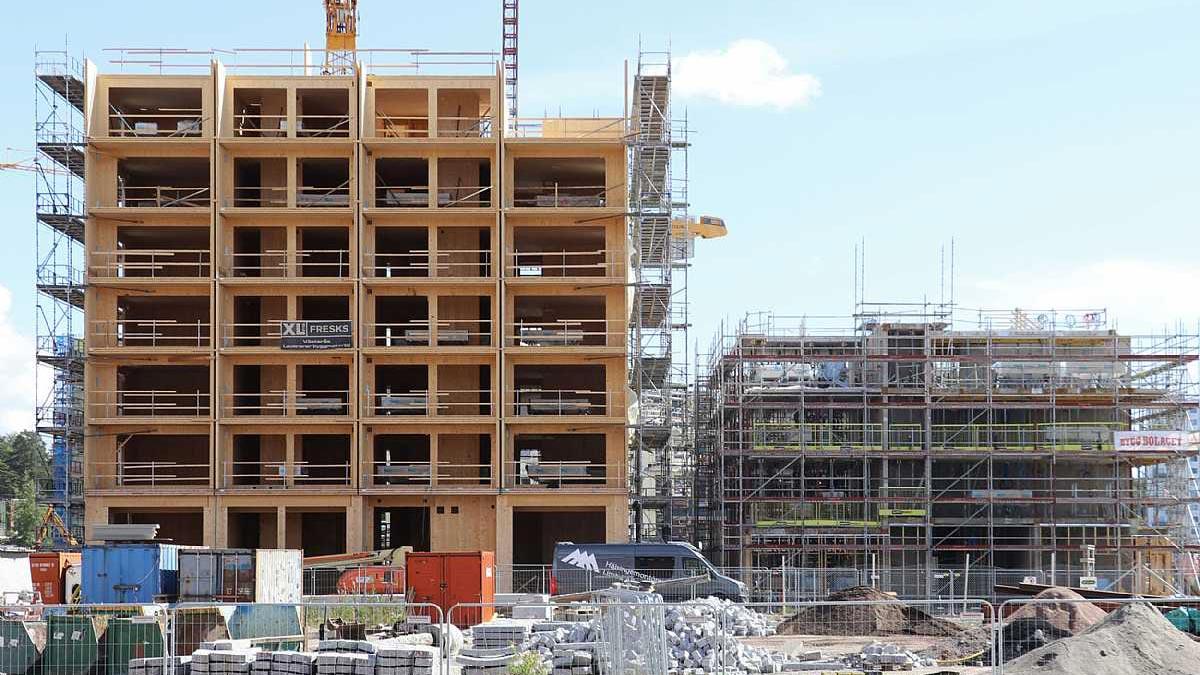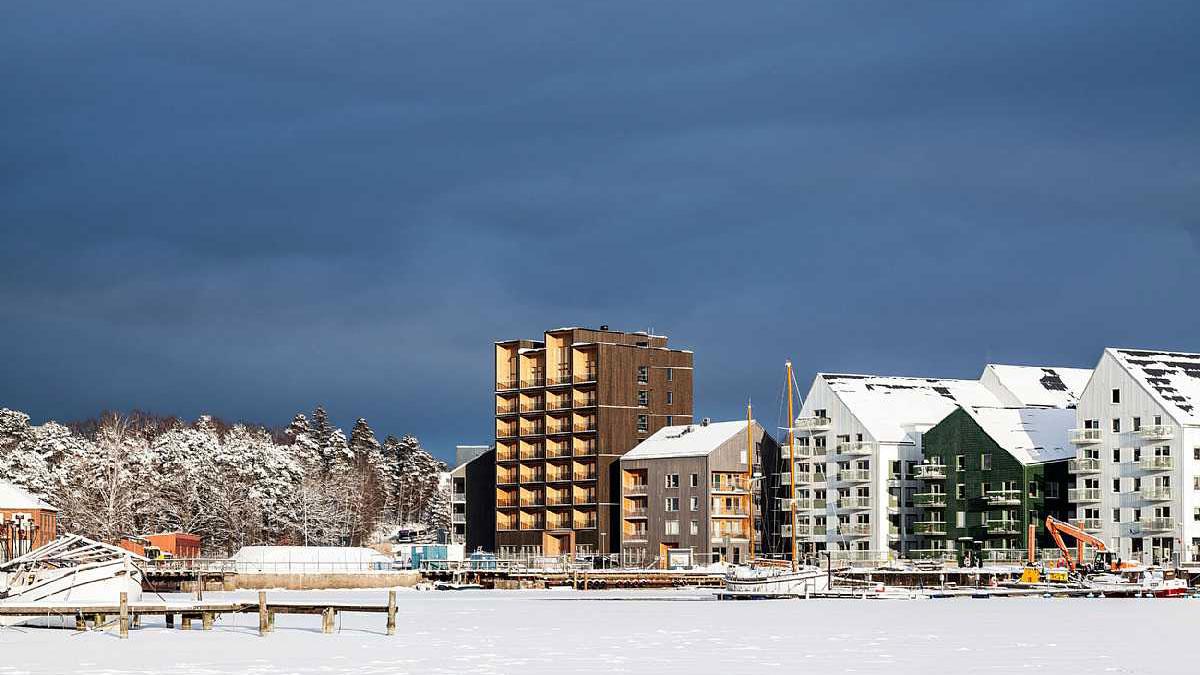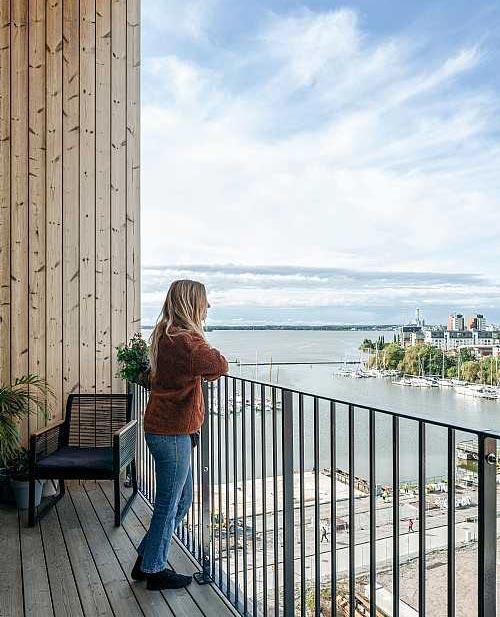Timber high-rise with guaranteed recycling
The Kajstaden Tall Timber Building in Sweden marks the beginning of a new generation of mass timber blocks. Using this building material saves around 500 tonnes of CO₂, and it also facilitates deconstruction later on.
Timber construction engineering is continually setting new benchmarks, and its developments are enabled by CLT and glulam as sophisticated building materials. Even though Austrian and German researchers are behind these innovations, pioneering constructions are mainly built by the Scandinavians at present. The Kajstaden Tall Timber Building was Sweden’s first high-rise to be built entirely of wood.
This nine-storey construction is part of the new urban development area called Kajstaden in Sweden’s Västerås, an hour from Stockholm. Over the coming years, around 700 new apartments are due for completion here. The Tall Timber Building is the flagship of the new neighbourhood and enjoys a prime position directly on the shores of Lake Mälaren, Sweden’s third-largest lake.
Lake views for all
In this building, it’s not just a privileged few who can see the lake from their apartments. Instead, the views are allocated democratically. The residential block with its striking timber facade offers unrestricted views across the water for all its residents. Its apartment layout positions each living room facing the lake, complete with adjoining terrace.
The building’s design was created by Scandinavian architectural firm C.F. Møller Architects, which has even higher plyscrapers in the pipeline. Fjordporten in Oslo and the high-rise Västerbroplan on Stockholm’s “King’s Islet” are just two of their projects.
A landmark for the new neighbourhood
The extraordinary shape and two-colour timber facade are remarkable features of this project. While the cladding is carbonized and therefore dark, the timber used for the loggia panelling is light-coloured. This is a contrast that creates both a feeling of spaciousness and also a very special character.
The building’s height and architecture make it a landmark for the new district, as well as a beacon for what can be achieved when it comes to sustainable building.
Ola Jonsson, architect at C.F. Møller
“We wanted the building to have a clear beginning and a vertical end that creates tension and elegance. At the very top, there are two floors with higher ceiling height and different roof shapes that set them apart from other buildings and create an exciting silhouette,” explains the architect responsible for the project, Ola Jonsson.
Large glass frontages and the southwest-facing balconies let in natural light and allow views of the surrounding landscape. “The building’s height and architecture make it a landmark for the new district, as well as a beacon for what can be achieved when it comes to sustainable building,” says Jonsson.
550 tonnes of CO₂ saved
Even though it doesn’t look like it on the inside, the Tall Timber Building is a timber construction through and through. Specifically, this means that the entire structure is made of wood. It is not just the walls, joists and balconies that are made of CLT, the elevator shafts and stairwell are timber as well. Many of the interior walls are covered in plaster for fire safety reasons, as required when the building was constructed.
“Neither the developer nor the contractor had built in wood before, but they were determined to go all in,” explains Jonsson. The high degree of prefabrication allowed construction at a very fast pace. Three assembly workers needed an average of three days to complete the shell for one storey.
In order to ensure that the materials can be deconstructed later on, “mechanical joints with screws have been used”, the project description reads. “The total carbon dioxide saving is estimated to be 550 tonnes of CO2 when using solid wood instead of concrete.”
Pioneers of mass timber construction
The prefabricated CLT elements were provided by Martinsons sawmill in Bygdsiljum. A few years ago, the company expanded its production of CLT construction elements. Commenting on this increase in production capacity, CEO Lars Martinson explains: “Demand is strong. There is a lot of construction going on throughout Sweden and CLT meets the need for efficient industrial construction with the lowest possible climate impact.”
Just under 60 kilometres further north, in the city of Skellefteå, the company provided the timber construction elements for the 20-storey Sara Kulturhus by White Arkitekter. Until the cultural centre opened in 2021, the Tall Timber Building was able to enjoy its position as Sweden’s tallest timber high-rise for a whole two years. And it will continue to be regarded as a pioneer of recyclable mass timber construction in future as well. As well as a clear message on the path to climate turnaround.
Text: Gertraud Gerst
Translation: Rosemary Bridger-Lippe
Photos: Nikolaj Jakobsen, C.F. Møller Danmark A/S
